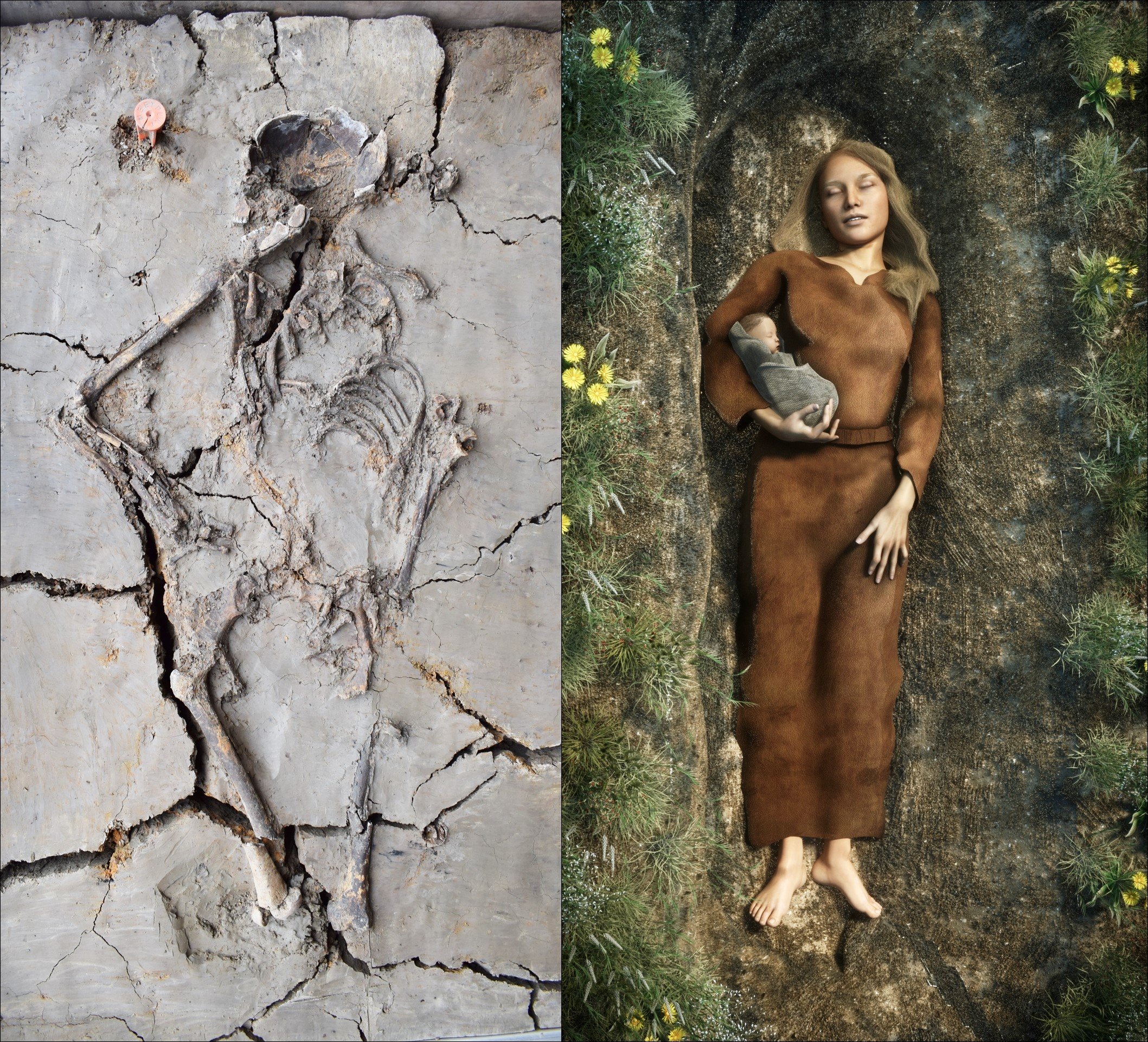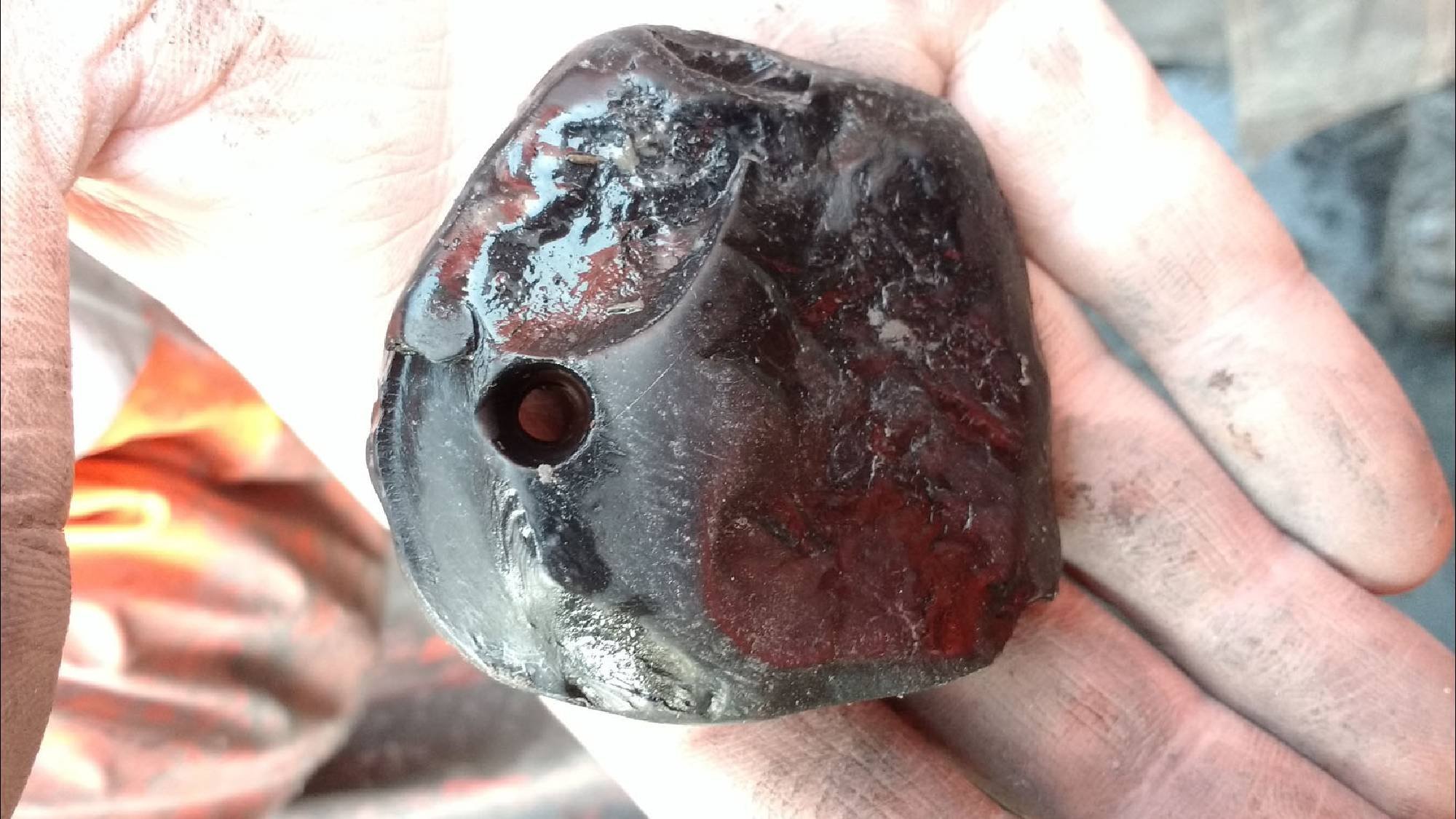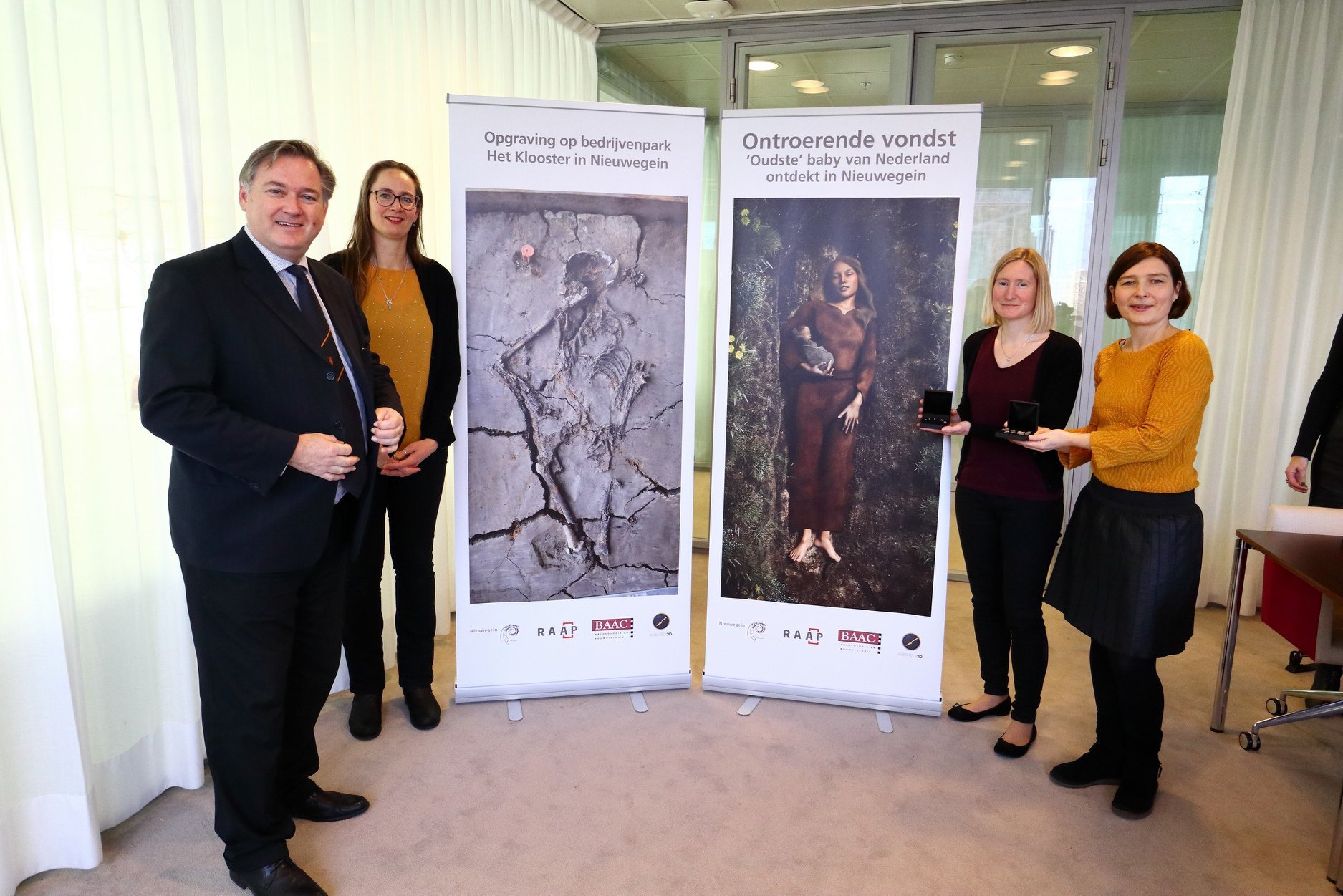Dutch archaeologists have discovered a 6,000-year-old Stone Age burial of a woman with a baby cradled in her arm in the central Netherlands city of Nieuwegein. It is the oldest infant burial ever found in the Netherlands.
Nieuwegein is rich with archaeological material from the Swifterbant culture, a Neolithic-era culture who transitioned from hunter-gathering to cattle farming in settlements along the riverbanks and wetlands of what are today the Netherlands between 5300 and 3400 B.C.
An abundance of Swifterbant artifacts and remains, about 136,000 of them (far more than were discovered at the type site in Swifterbant, Flevoland province), have been found under six and a half feet of clay and peat at Nieuwegein’s Het Klooster business park. Artifacts include hundreds of pieces of flint, a grindstone worn to a smooth surface by the second grinding stone used the mill grains and cereals, a striking jet pendant, animal bone chisels and earthenware pottery. The clay and peat have kept the objects and remains in an unusually good state of preservation for thousands of years. One of the pottery vessels still had a layer of food in it.
They also discovered four skeletons which they cut out of the clay en bloc and transported to the Leiden laboratory of RAAP Archaeological Consultancy for careful excavation. One of them was the skeleton of a young adult woman who was 20-30 years old at time of death. When the remains were first unearthed, archaeologists didn’t realize they’d just found the oldest infant burial in the Netherlands. They didn’t realize it was an infant burial period. There was no osteological material immediately visible pointing to the presence of a baby buried with the young woman. It was the woman’s right arm bent at a 90 degree angle with her elbow out that suggested to archaeologists there was something anomalous in that spot. The Swifterbant culture buried their dead with their legs outstretched and arms straight by their sides.
When the remains were excavated in the lab, archaeologists discovered small bone fragments in the crook of the woman’s right arm: pieces of the clavicles, skull, a leg bone, a mandible complete with milk teeth. The teeth were so small they could have belonged to a newborn (there are teethlets in their wee jaws, they just haven’t erupted yet) or a baby up to six months old.
“It really makes an impression when you find little baby teeth buried in clay for 6,000 years and see how similar they are to all those milk teeth that are kept in matchboxes by parents everywhere!” [Dutch broadcaster] NOS quotes [project leader Helle] Molthof as saying.
This is an exceptionally rare discovery. Infants have such soft bones that they disintegrate within months of burial. The waterlogged conditions of this burial, the thick alluvial clay deposits and the peat, preserved these fragile remains for 6,000 years.
The archaeological team hopes to determine whether the adult woman and the baby she was laid to rest cradling are, as one would suspect, mother and child, using DNA analysis.
DNA testing will have to determine whether the woman is the baby’s mother, although there seems to be little doubt that she is, and the sex of the baby. The archaeologists hope the find will tell them more about the burial ceremonies of the Swifterbant people. “We know how they lived, what sort of food they ate, what their houses were like but we don’t know very much yet about how they buried their dead and what happened to the children,” Molthof told the broadcaster.
Isotope analysis will have to show if the woman was born in the area or whether she travelled there at a later date.









